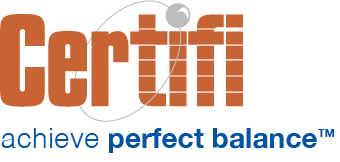In late December, the US Department of Health and Human Services (HHS) released a hefty 408 page proposed Notice of Benefit Payment Parameters for 2023. As evidenced by its length, the proposed rule covers a lot of ground in the realm of Affordable Care Act (ACA) exchanges and individual and small-group insurance markets. Released every year, it helps drive the regulations relied upon by states, health insurers, and brokers when creating and selling health plans. HHS typically publishes these proposed rules annually, a comment period follows, and final rules follow.
Though we won’t go into great detail about other aspects of the proposed notice, one significant change occurred in the 2023 proposed rule. HHS proposed that insurers must contract with at least 35 percent of Essentially Community Providers (ECP) in a plan’s service area. That’s an increase over the previously mandated 20 percent.
Is that significant? Let’s take a look at the history of Essential Community Providers and the implications of the proposed rule change.
What is an Essential Community Provider?
The term dates back to the 1993 Health Security Act proposed by the Clinton administration in an attempt to provide universal health care. Though the act failed, the term stuck. Some states later adopted legislation requiring managed care plans or Medicaid to use Essential Community Providers in their networks.
States may have broader definitions of Essential Community Providers. But from a federal perspective, the term was defined as a provider that serves predominantly low-income, medically underserved individuals. Specifically, that includes providers described in section 340B(a)(4) of the PHS Act and section 1927(c)(1)(D)(i)(IV) of the Social Security Act. CMS later identified six categories that Essential Community Providers fall under. They also required qualified health plans to offer contracts to all Indian Health Service providers and at least one Essential Community Provider from each of the categories. Those categories are:
- Federally Qualified Health Center
- Ryan White Provider
- Family Planning Provider
- Indian Health Provider
- Hospital
- Other ECP Provider
In addition, the 2023 proposed rule seeks comment on adding substance use disorder treatment centers to the list of other Essential Community Providers. Additionally, it seeks comment on the use of telehealth services at ECPs. Finally, it seeks comment on whether newly added Medicare-certified Rural Emergency Hospitals should be added to the Hospital category.
Where can I find a list of Essential Community Providers?
The Centers for Medicare and Medicaid Services (CMS) publishes the list of Essential Community Providers on a page of their microsite devoted to Qualified Health Plan certification. For the 2022 plan year, the list numbered more than 12,000.
What’s the history behind these providers and ACA-qualified health plan networks?
As we mentioned, the term dates back to the failed effort to deliver universal health care in the 90s. The 90s saw growth in managed care plans in both private and Medicaid markets. As a result, several states began to require that these plans contract with Essential Community Providers. Managed-care plans reduced costs mainly through their networks. As a result, many believed they may lock out Essential Community Providers. In turn, they may limit many patients’ access to these providers.
The ACA created health insurance exchanges in 2014. To sell in those exchanges, health plans had to meet numerous regulatory requirements, including network standards. One of those network standards required plans to include Essential Community Providers.
The initial statutory language was vague, which led to further guidance. In the federal ACA exchange, plans were required to include at least 20% of the Essential Community Providers in their service area. They also needed to offer contracts to at least 1 Essential Community Provider in each of the 6 categories. Yet, CMS left wiggle room. Plans could meet a lower bar. They could contract with 10% of ECPs if they described in writing how they’d provide service to low-income and medically underserved enrollees or even lower if they could also describe how they planned to increase Essential Community Provider access in the future).
For the 2015 plan year, the requirement changed to include at least 30% of Essential Community Providers in a plan’s service area, including 1 from each category. The Trump administration later lowered that requirement to 20% of providers for the 2017 plan year.
Note that individual states may have different thresholds. For example, Montana requires plans to strive to include at least 80% of Essential Community Providers.
What impact will the 2023 proposed rule have on health plans?
According to the 2023 proposed rule notice, very little. When the requirement was 30% from 2015 to 2017, all health plans satisfied the 30 percent requirement with limited reliance on write-ins and justifications. In fact, in 2021, 80% of medical plans and 74% of dental plans met the 35% threshold. The mean Essential Community Provider percentage across plans was 55%.
Why require Essential Community Providers?
It’s about health equity. HHS sees the requirement as improving access to quality health care for low-income and other medically underserved individuals. The increase to 35% of providers in a health plan’s area helps ensure access to low-income and other medically underserved individuals.
Certifi’s health insurance premium billing and payment solutions help healthcare payers improve member satisfaction while reducing administrative costs.



